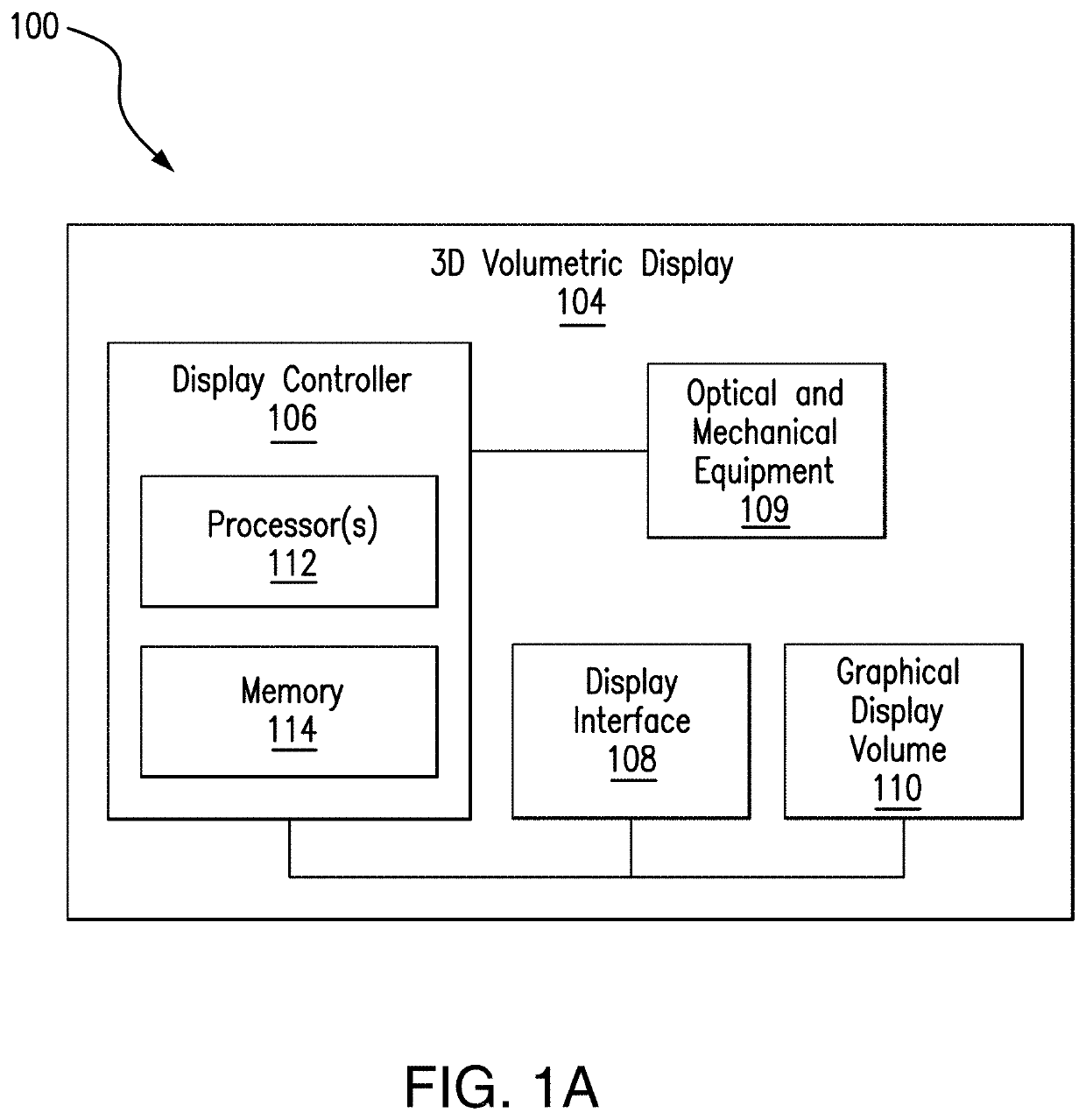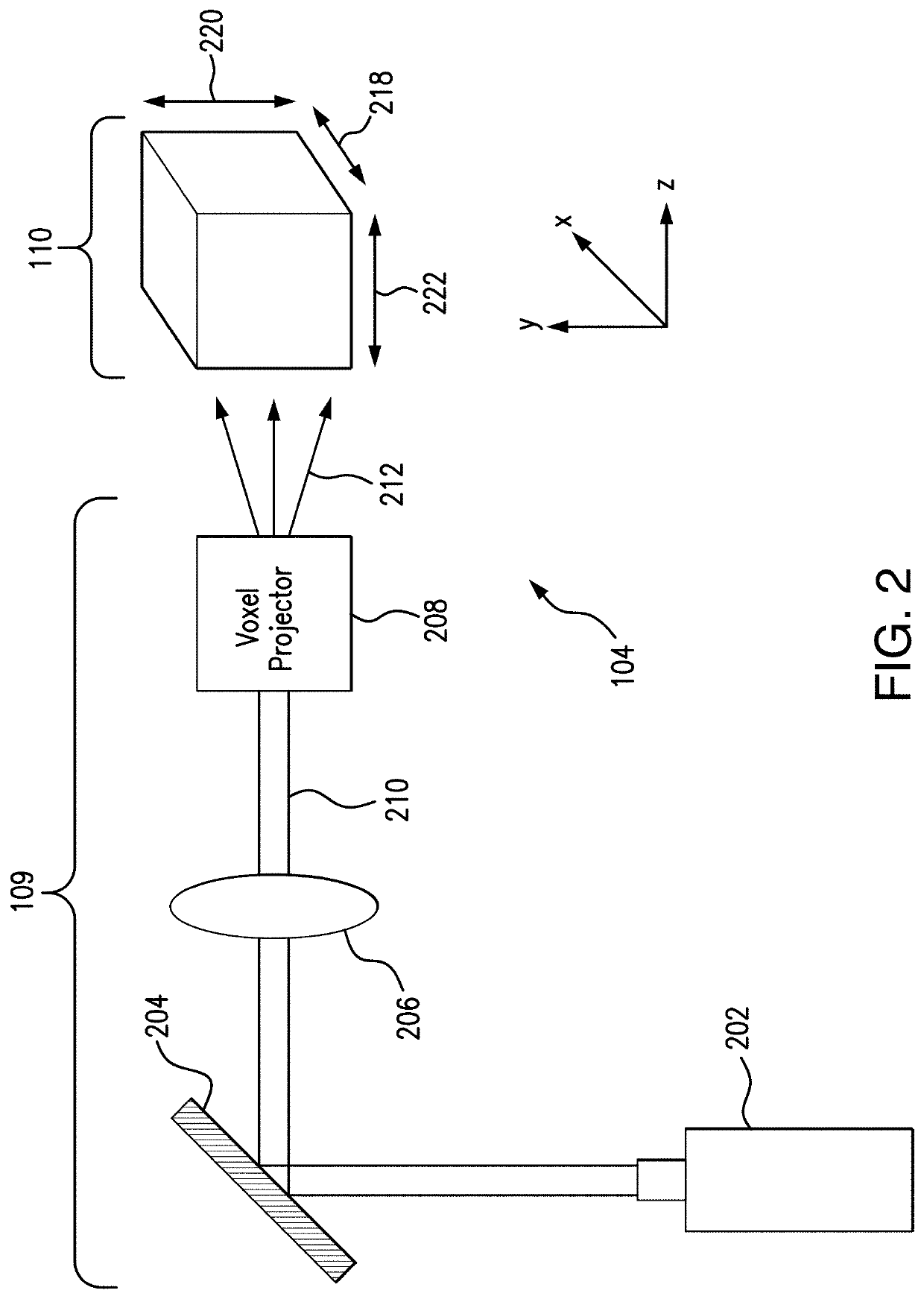Volumetric accessing of a volumetric display
- Summary
- Abstract
- Description
- Claims
- Application Information
AI Technical Summary
Benefits of technology
Problems solved by technology
Method used
Image
Examples
Embodiment Construction
[0039]As described above, in the case of static volumetric displays, traditional raster scanning that has been demonstrated for cathode ray tubes is often utilized. However, such traditional raster scanning may be too slow to achieve the necessary large scale data accessing for 3D displays. For example, it may be too difficult to raster scan X and Y locations of a volume using existing techniques. For example, in order to get a display image for a static volumetric display (e.g., a static volumetric display that is approximately 0.5 m by 0.5 m by 0.5 m) that is on the order of the resolution of modern day flat screens, there is a need to illuminate a volume that includes approximately 1.25e17 pixels. This is a very large number of pixels that most available graphics processing units (GPU) may not be able to resolve. Accordingly, there is a need for techniques that can cover more of the volume of a 3D volumetric display.
[0040]As will be described in greater detail below, in some impl...
PUM
 Login to View More
Login to View More Abstract
Description
Claims
Application Information
 Login to View More
Login to View More - R&D
- Intellectual Property
- Life Sciences
- Materials
- Tech Scout
- Unparalleled Data Quality
- Higher Quality Content
- 60% Fewer Hallucinations
Browse by: Latest US Patents, China's latest patents, Technical Efficacy Thesaurus, Application Domain, Technology Topic, Popular Technical Reports.
© 2025 PatSnap. All rights reserved.Legal|Privacy policy|Modern Slavery Act Transparency Statement|Sitemap|About US| Contact US: help@patsnap.com



